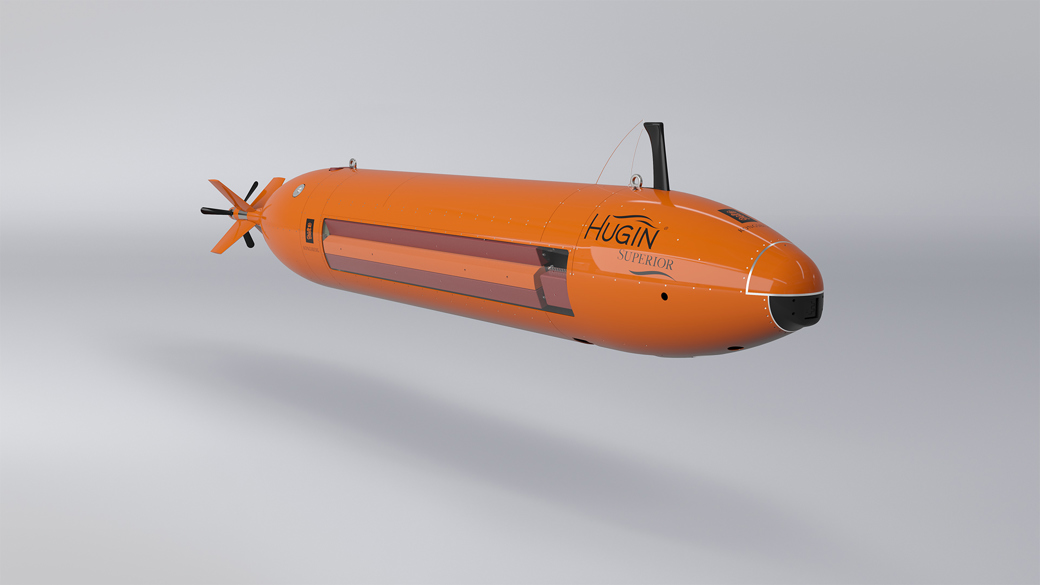
Seabed Warfare: Inspect, Detect and Protect using Autonomous Underwater Vehicles
There are differing definitions of seabed warfare, depending on who you talk to. The aspect on everyone’s mind, given recent events, is the protection of critical national infrastructure (CNI), such as oil or gas pipelines, power cables or communications cables. There are vast amounts of all three CNI categories throughout our oceans, much of it in relatively deep water. This makes it difficult to monitor and requires the right tool. The key to seabed warfare is efficiently accessing reliable data from which actionable information can be determined, and one autonomous platform has proven itself superior to all others in this domain.
HUGIN Superior was launched some 5 years ago, with a goal of presenting the commercial industry with the best packaged Autonomous Underwater Vehicle (AUV) available. It is equipped with high resolution sensors that generate precision data over unrivalled ranges, coupled with the best autonomous navigation and positioning solution for an AUV. This combination garnered interest from the commercial segment, but also from the seabed warfare community.
HUGIN Superior is rated to 6000 m but is equally adept in shallow water as it is at maximum depth. If you need area coverage combined with resolution and a high degree of position certainty, HUGIN Superior is the only viable tool available. So much so, that it has been selected by navies in countries even where a domestic competitor is available. In fact, since the first HUGIN rated to 6000 m was delivered in 2016, Kongsberg has delivered more 6000 m rated systems than any other manufacturer.
There are challenges involved with understanding the environment, seabed and infrastructure upon it that lend themselves to underwater vehicles. Not least the challenge of resolution. Most infrastructure laid on the seafloor is too deep to reliably use surface sensors to detect these relatively small objects. HUGIN Superior comes into its own in this space, generating unmatched imagery from the comprehensive sensor suite on board.
The Kongsberg HISAS 1032 Dual Rx synthetic aperture sonar collects both imagery and bathymetry over a very wide area. At a routine survey speed of 3.5 to 3.8 knots it can detect objects the size of an average mobile telephone over a swath of more than 750 metres. The imagery is processed in near real-time on board the AUV and can be analysed by on-board advanced target recognition algorithms to detect and classify objects against a library of known targets.
This capability is unique in the AUV industry. No other system can cover such a large area in such a small amount of time to the required resolution. It works for area surveys and linear surveys alike. Indeed, the need to detect and follow pipelines and cables also lends itself to HUGIN Superior’s talents. The vehicles are equipped with a pipe tracking capability as standard. This enables the vehicle to detect and follow linear features down to about 10 centimetres in diameter. HUGIN Superior can also detect very small diameter fibreoptic cables on the seafloor.

For closer inspection, or where it is desirable to limit sound in the water, non-acoustic sensors including the camera and laser provide ultra-high resolution imagery and a 3D colour point cloud of the track directly beneath the vehicle. These operate in conjunction with the EM2040 multibeam echosounder, magnetometer and the other environmental sensors like methane, dissolved oxygen and conductivity, temperature and depth sensors. All data are timestamped and georeferenced at the point of capture, to enable rapid and accurate playback after the mission.
Most HUGIN Superiors are operated in a fully autonomous mode, with mission durations in excess of 2 days. During this time, the in-situ Sunstone navigation processor combines the real-time inputs from multiple sensors to determine where the vehicle is. This is the other skill that HUGIN Superior truly excels at.
Linear surveys are perhaps the most challenging for an AUV, with position drift accumulating over time. With lawnmower patterns, much of the drift is cancelled during reciprocal legs, but that is not possible when heading in one direction. Sunstone makes light work of this with proven performance better than any other available system. It is true that the data can be beautiful, but it has no value if you don’t know where it is.
To reliably inspect, detect and protect, HUGIN Superior is the system of choice.